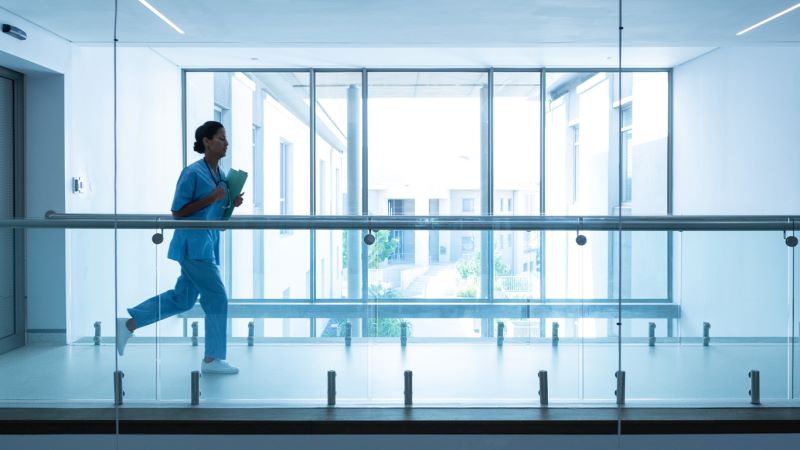Healthcare in the election headlights
A review of healthcare estates and buildings, and a more holistic look at how new hospitals are built can ensure the NHS meets the demands of the next government.
We are living in a period of intense pressure on healthcare providers around the world.
The United Nations estimates that the global human population will increase by two billion in the next 30 years, peaking at 10.4 billion by the mid-2080s. This continuing trend of rapidly increasing populations means a growing dependence on healthcare facilities as large populations age.
Alongside expanding populations, patients’ expectations of the clinical care they receive has increased. They want hospital staff to know all about them before they walk in, have access to their data whenever they need it, be offered more advanced forms of care if they choose to take them, and experience timely communication about what comes next without needing to request it. For most healthcare systems, this is a tall order.
Even moving aside from patient needs and expectations, health services must also contend with compliance brought forth by fresh government initiatives and downward pressure amid a range of elections across 2024. Looking at the UK election scheduled for 4 July, all of the major political parties have promised to change or improve the NHS in some way. Whether it’s the Conservatives commitment to driving productivity or the Labour ambition of cutting waiting times for GP appointments, healthcare leadership will need to focus on transformation of services no matter the outcome of the polling over the summer.
Responding to all these challenges inevitably requires an assessment of healthcare estates and buildings. They need to meet the demands of today and tomorrow, respond to impending technological advancements, anticipate the need to decarbonise effectively and accommodate potential changes brought on by a changing government.
This is a complex set of needs, but it ultimately boils down to a clear and concise objective: improving clinical outcomes while leaving a lasting legacy.
Improving clinical outcomes
Great facilities open avenues to better care. Well designed and well-built hospitals enable clinicians to serve patients more efficiently, driving productivity targets, while also being able to offer cutting edge treatments that underpin better patient care.
Healthcare leaders, therefore, need to focus on ensuring their current estates are up to the challenge, alongside constructing new facilities that drive productivity while addressing patient needs. Indeed, with the UK currently providing 2.4 beds per 1,000 people, below the EU average of 4.8, the building of new hospitals as soon as possible will be integral in realising this future.
These new facilities are the first cornerstone of leaving a lasting legacy for healthcare providers. However, just looking at the bricks-and-mortar outcomes alone could miss an opportunity to create a stronger healthcare industry overall.
Hospitals are infamously complex structures. They typically take a decade or longer to take from concept to operational use, cover a massive footprint, require engagement with vast numbers of stakeholders, face both national and local political scrutiny and require differing teams to work concurrently towards a shared goal.
We therefore need to look closely at how hospitals are delivered, alongside equal effort into what such hospitals will look and operate like.
Leaving a legacy through innovative delivery
Getting this right means first involving clinicians and other key stakeholders as early as possible in the design journey. Progressing with a hospital’s design without seeking insights from those that operate within them day-to-day risks designing for obsolescence almost immediately upon use.
In addition, there remain significant benefits from making use of more innovative approaches to delivery. Building Information Modelling (BIM) enables healthcare programme leaders to make more informed decisions during the design process, including allowing clinicians and other stakeholders to better influence the final layout. Meanwhile Modern Methods of Construction (MMC) is a system of approaches focused on maximising efficiency and sustainability, including an emphasis on off-site construction of discrete modules that are assembled on-site. MMC can significantly reduce construction timelines, minimise local disruption and cut carbon emissions, all while reducing personnel hours required on site, improving productivity while increasing safety.
Finally, any delivery team needs to be structured around a mission-focused approach. Given the complexity of hospital construction, requiring multi-faceted teams focused on differing outputs, there is always the risk of silos forming or failures in cooperation during the lifetime of the programme. Project leadership therefore needs to ensure that their approach is defined by the mission in hand: building outstanding facilities that create the best environment for care possible for local communities. The Delivery Partner model in particular is centred on driving teams to collaborate effectively, centred on a shared purpose and unity of vision.
Through achieving this industry-wide transformation, healthcare leaders will be primed to rise to the pressures they face with rapidly expanding populations and a period of intense political pressure. Delivering effective infrastructure to meet future needs is a challenging endeavour, but one we believe is wholly achievable when approached with the right mission in mind.
This article was first published in Building Magazine.
Mace has produced a series of healthcare insights papers, including:












